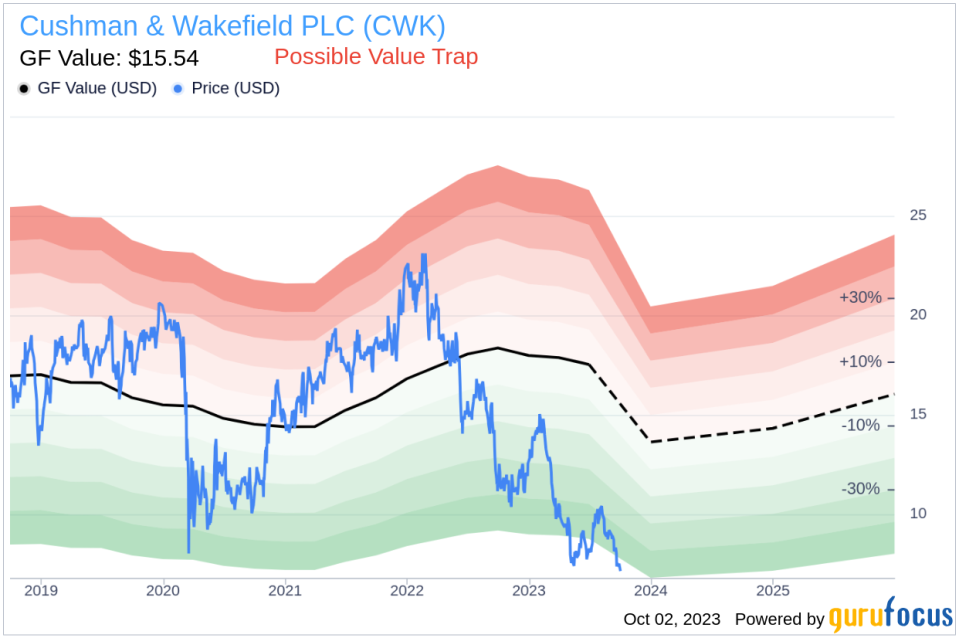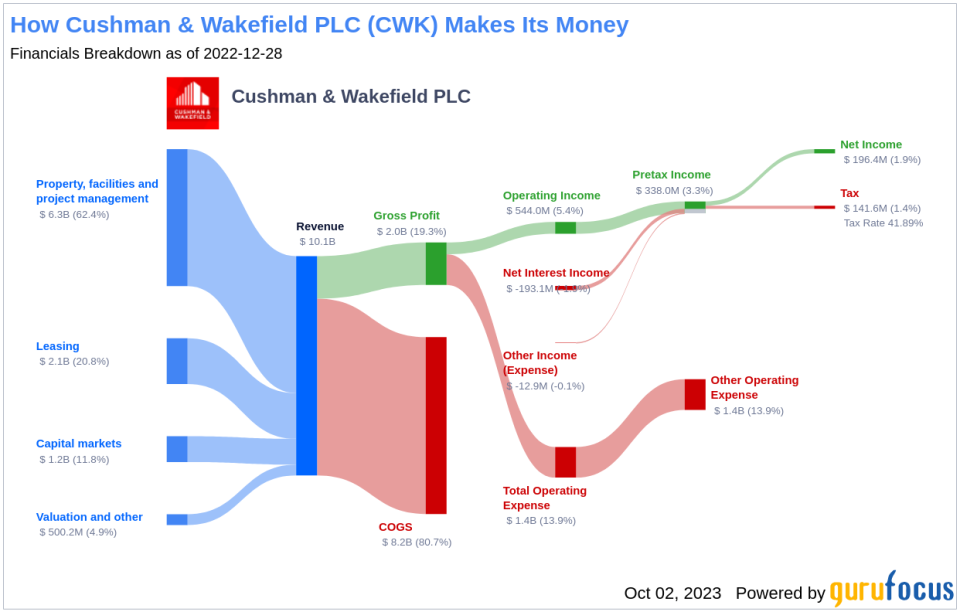Is Cushman & Wakefield PLC (CWK) Too Good to Be True? A Comprehensive Analysis of a ...
Value-focused investors are always on the hunt for stocks that are priced below their intrinsic value. One such stock that merits attention is Cushman & Wakefield PLC (NYSE:CWK). The stock, which is currently priced at 7.14, recorded a loss of 6.3% in a day and a 3-month decrease of 7.86%. The stock's fair valuation is $15.54, as indicated by its GF Value.
Understanding GF Value
The GF Value represents the current intrinsic value of a stock derived from our exclusive method. The GF Value Line on our summary page gives an overview of the fair value that the stock should be traded at. It is calculated based on three factors:
1. Historical multiples (PE Ratio, PS Ratio, PB Ratio and Price-to-Free-Cash-Flow) that the stock has traded at.
2. GuruFocus adjustment factor based on the company's past returns and growth.
3. Future estimates of the business performance.
We believe the GF Value Line is the fair value that the stock should be traded at. The stock price will most likely fluctuate around the GF Value Line. If the stock price is significantly above the GF Value Line, it is overvalued and its future return is likely to be poor. On the other hand, if it is significantly below the GF Value Line, its future return will likely be higher.
Spotting Potential Risks
However, investors need to consider a more in-depth analysis before making an investment decision. Despite its seemingly attractive valuation, certain risk factors associated with Cushman & Wakefield PLC should not be ignored. These risks are primarily reflected through its low Altman Z-score of 1.45. These indicators suggest that Cushman & Wakefield PLC, despite its apparent undervaluation, might be a potential value trap. This complexity underlines the importance of thorough due diligence in investment decision-making.
Decoding the Altman Z-Score
Before delving into the details, let's understand what the Altman Z-score entails. Invented by New York University Professor Edward I. Altman in 1968, the Z-Score is a financial model that predicts the probability of a company entering bankruptcy within a two-year time frame. The Altman Z-Score combines five different financial ratios, each weighted to create a final score. A score below 1.8 suggests a high likelihood of financial distress, while a score above 3 indicates a low risk.
Company Overview
Cushman & Wakefield is one of the largest commercial real estate services firms in the world, with a global headquarters in Chicago. The firm provides various real estate-related services to owners, occupiers, and investors. These include brokerage services for leasing and capital markets sales as well as advisory services such valuation, project management, and facilities management.
This is the income breakdown of Cushman & Wakefield PLC:
Cushman & Wakefield PLC's Low Altman Z-Score: A Breakdown of Key Drivers
A dissection of Cushman & Wakefield PLC's Altman Z-score reveals Cushman & Wakefield PLC's financial health may be weak, suggesting possible financial distress:
Conclusion
Despite the seemingly attractive valuation of Cushman & Wakefield PLC, the low Altman Z-score and other risk factors suggest that it might be a potential value trap. Therefore, investors should exercise caution and conduct thorough due diligence before making an investment decision.
GuruFocus Premium members can find stocks with high Altman Z-Score using the following Screener: Walter Schloss Screen .
This article first appeared on GuruFocus.


